

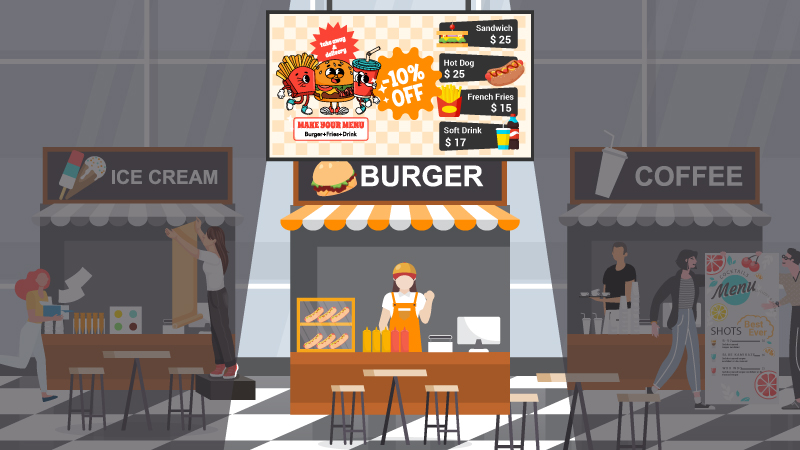
If you own or manage a small quick‑service restaurant (QSR), you’re likely juggling fast operations, shifting customer tastes, and frequent menu or promotion changes. Printed or static menu displays often can’t keep up—they get outdated, inconsistent across different locations, and cost you reprints.
Digital menu boards for restaurants present a solution: dynamic content, remote updates, and brand consistency. This guide is your beginner’s road map: what digital menu boards are, how they operate, how much they cost, and how you can start—especially for small QSRs with limited resources.
A digital menu board is a modern display solution that replaces traditional printed or static signage in quick-service restaurants (QSRs). It typically consists of three main components: commercial-grade screens, a content management system (CMS), and digital media content such as images, videos, and menu listings.
At its core, a digital menu board allows restaurant owners to manage and display menus, prices, promotional offers, and visual elements using digital screens. These are not just slideshows or looping images — modern systems support advanced features such as scheduled content updates, real-time overrides, and even integration with inventory or POS systems.
Common myths:
“It’s just a fancy slideshow” — In reality, it supports automated scheduling, live updates, and real-time data.
“It requires IT staff to run” — Most CMS tools are designed for non-technical users with easy-to-use interfaces.
“It’s too expensive for small businesses” — There are affordable options and scalable systems suitable for single-location QSRs.
Running a digital menu board effectively involves more than just plugging in a screen. It requires the thoughtful combination of the right hardware, a reliable CMS, and strategic content. Understanding how it all works—and how to choose the best setup for your needs—is key to success.
→ Create visual content – Menus, promotions, seasonal offers, upsells.
→ Upload to the CMS – Centralized software where all content is managed.
→ Schedule content – Based on time-of-day, day of the week, or events.
→ Deploy to screens – Push content remotely across one or multiple locations.
→ Monitor in real time – Ensure everything displays correctly and consistently.
→ Adjust as needed – Based on customer feedback, sales trends, or stock availability.
Some systems also allow POS or inventory integration. For example, if an item is sold out, the CMS can automatically remove or replace it on the menu board—no manual intervention needed.
Every digital menu board setup starts with selecting the right display. The type of screen you choose—and how it’s powered—will directly impact everything from installation complexity to day-to-day reliability. There are two common approaches:
Many QSRs start with a standard commercial display connected to an external media player running their content via CMS. This setup offers flexibility—you can choose from a wide range of CMS vendors, upgrade hardware independently, and scale the system as your needs grow. However, it comes with trade-offs: more devices, more cables, and potentially higher maintenance.
All-in-one digital signage displays integrate the media player directly into the hardware. This reduces clutter, speeds up installation, and simplifies daily operation—especially for smaller restaurants with limited IT resources. The trade-off is less flexibility in swapping or upgrading individual components, as everything is bundled inside the display.
Which to Choose?
For QSRs with existing CMS contracts or complex multi-store setups, a display-plus-player model may provide more control. For those starting fresh or looking to minimise setup headaches, all-in-one solutions deliver a clean and efficient path to digital transformation.
Once you’ve chosen your setup, the next step is selecting displays that physically match your restaurant’s layout, lighting, and customer flow.
It’s essential to choose screens based on where they’ll be installed. For indoor environments, a brightness level of 350–500 nits ensures visibility without being too harsh. For outdoor or drive-thru setups, displays must be weatherproof, include anti-glare technology, and have brightness levels of at least 1000+ nits to remain clear even in direct sunlight.
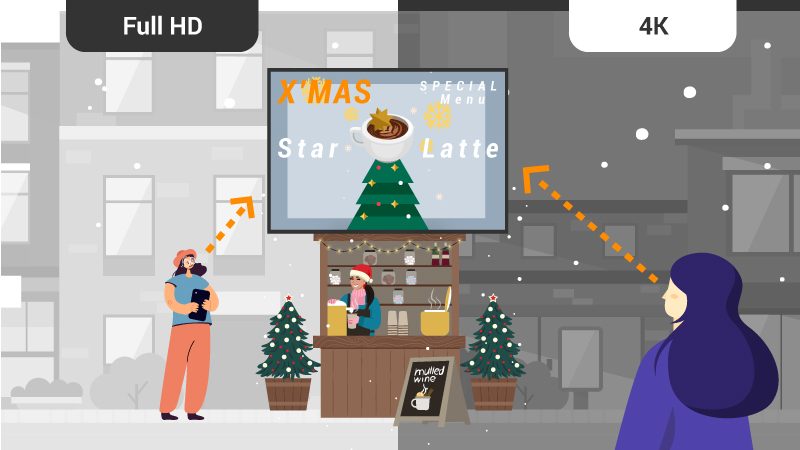
Most quick-service restaurants can rely on Full HD (1080p) for sharp visuals and legibility. However, if your location uses large-format displays or screens that customers view from a distance, consider 4K resolution for enhanced clarity and a more premium appearance.
The way your screens are mounted directly affects visibility and space efficiency. Wall-mounted screens are common for above-counter menus, ceiling-suspended displays work well in tighter spaces, and freestanding digital kiosks are ideal for entryways or queue areas. Choose based on your layout and customer flow.
Commercial screens should be built for long operational hours and include features like anti-reflective coatings to reduce glare. High contrast ratios ensure that your menus are legible under varied lighting, which is especially important during busy or brightly lit hours.
A CMS (Content Management System) is the control center of your digital menu board. It lets you manage your menus, update pricing, promote specials, and control what customers see—whether you’re running a single location or a growing chain. To choose the right CMS, it’s important to understand both how it operates and how it integrates with your display setup.
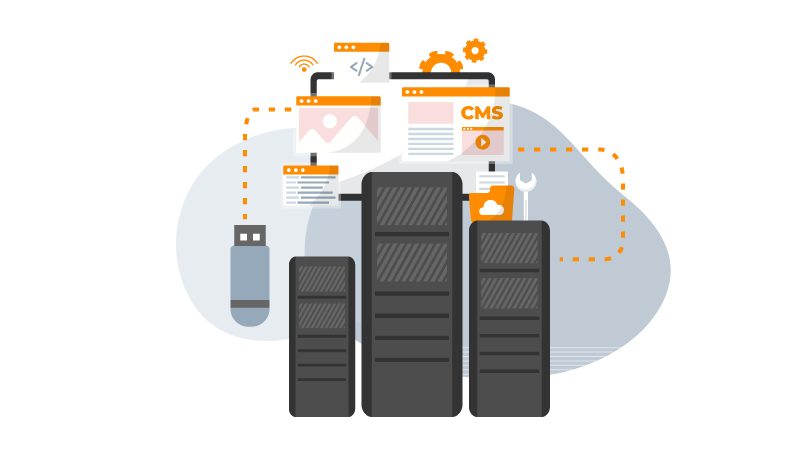
Local CMS
Runs directly on the display device or a local server, often updated via USB or internal network. While simple, it lacks the remote flexibility needed for multi-location operations.
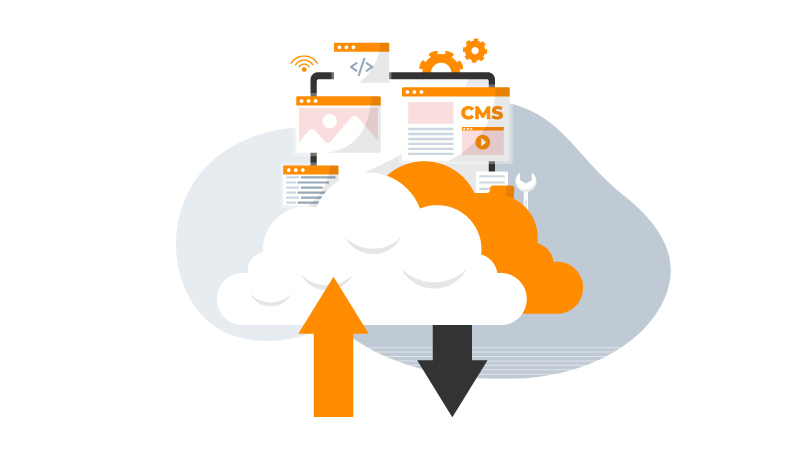
Cloud CMS
Operated via a web-based dashboard, allowing you to update, schedule, and manage all content remotely. This is ideal for restaurants with multiple stores or teams needing centralized control.
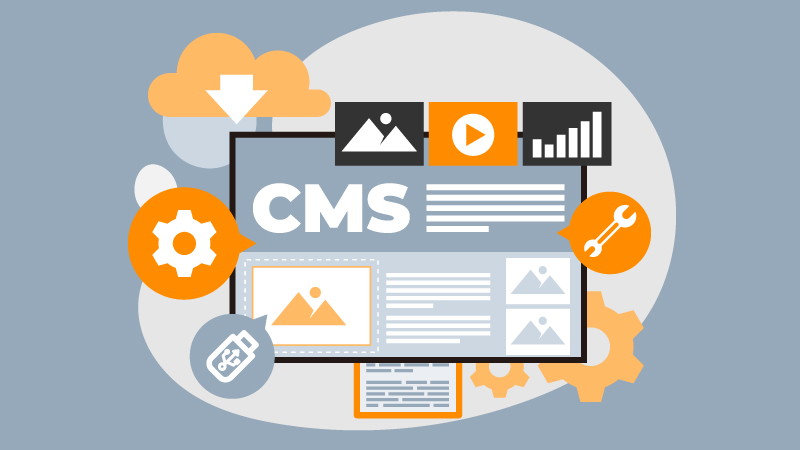
Built-In CMS Displays (All-in-One)
Modern commercial-grade displays often include built-in CMS compatibility. These all-in-one models integrate processing and storage directly into the screen, so you can run cloud platforms without needing a separate media player. Benefits include faster installation, fewer cables, and a cleaner look—ideal for smaller restaurants or locations with limited space and IT resources.
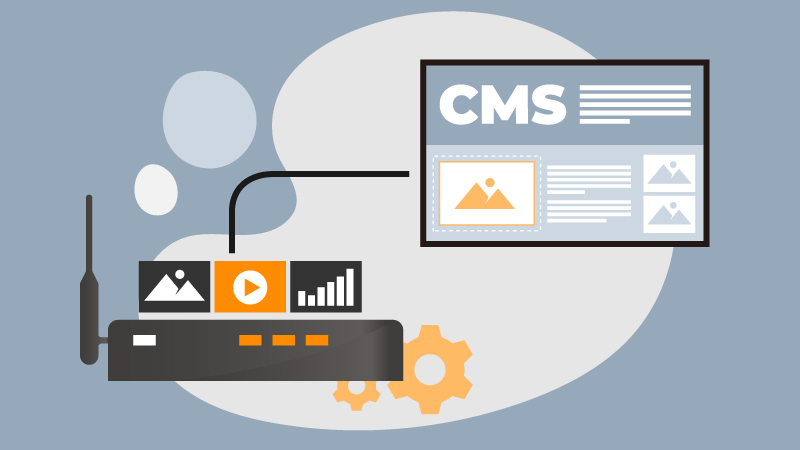
External Media Players
Alternatively, you can connect a dedicated signage player or mini-PC to any standard commercial display. This option offers greater flexibility: you can run virtually any CMS software, upgrade the media player independently of the screen, and handle more advanced content requirements. While setup involves more cabling and devices, it gives larger QSR chains or complex deployments more long-term control and scalability.
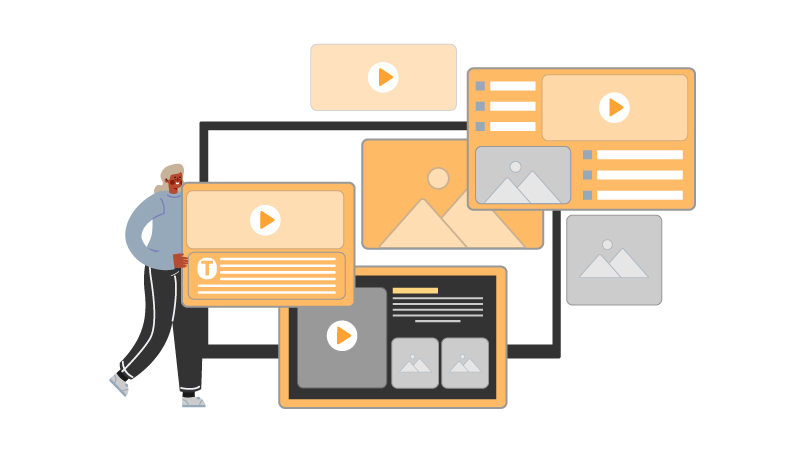
A beginner-friendly CMS should offer an intuitive interface that doesn’t require technical knowledge. Features like drag-and-drop design tools and pre-built templates make content creation and updates easy, even for non-designers.
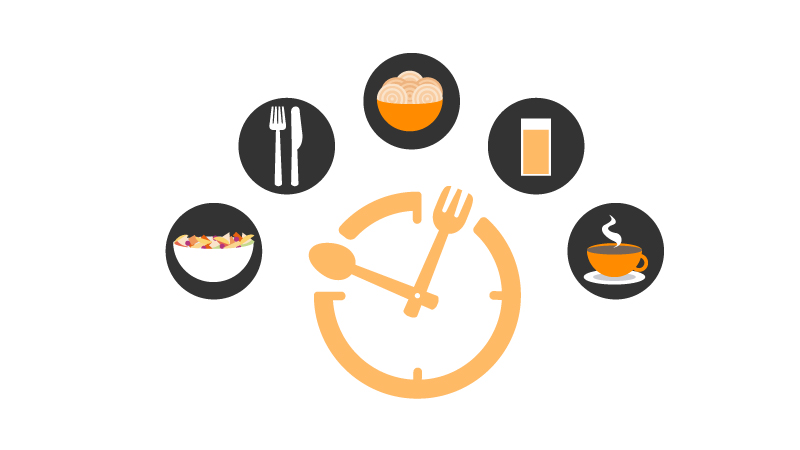
Your CMS should allow automated content scheduling by time of day—such as breakfast, lunch, and dinner menus—helping to streamline daily operations.
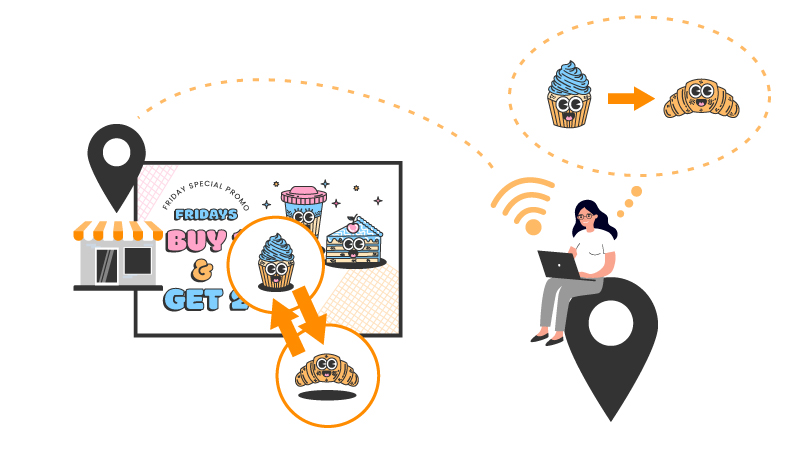
In fast-paced restaurant environments, it’s important to make immediate content changes when items sell out or promotions change. A responsive CMS enables your team to update menus in real time without needing to wait for overnight scheduling or third-party support.
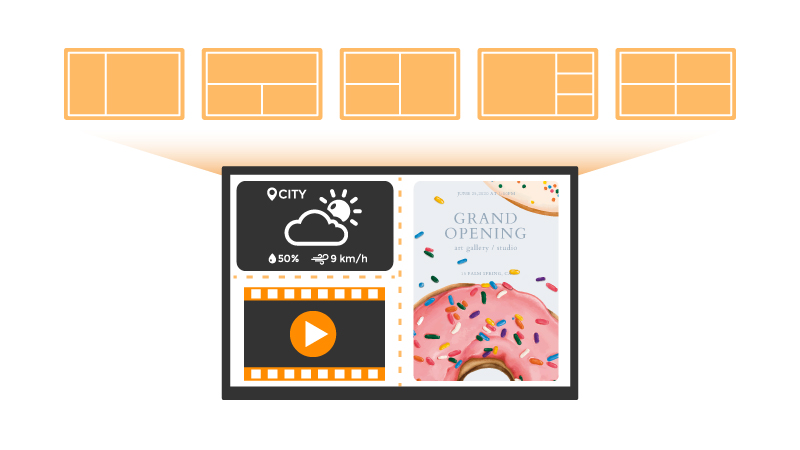
Divide your display into sections for different types of content: show your core menu in one zone, highlight promotions in another, and use a third for customer messages or videos.
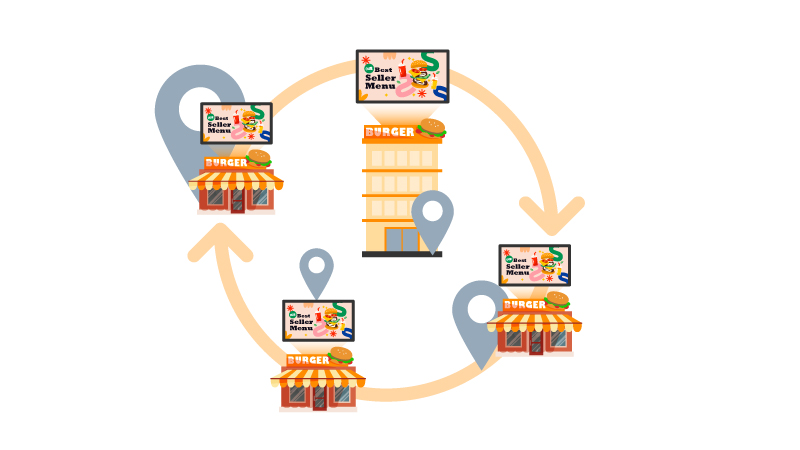
If you operate multiple locations or franchises, your CMS should provide centralized control. This allows you to manage and push content to all locations remotely, ensuring brand consistency while still offering flexibility for local customization.
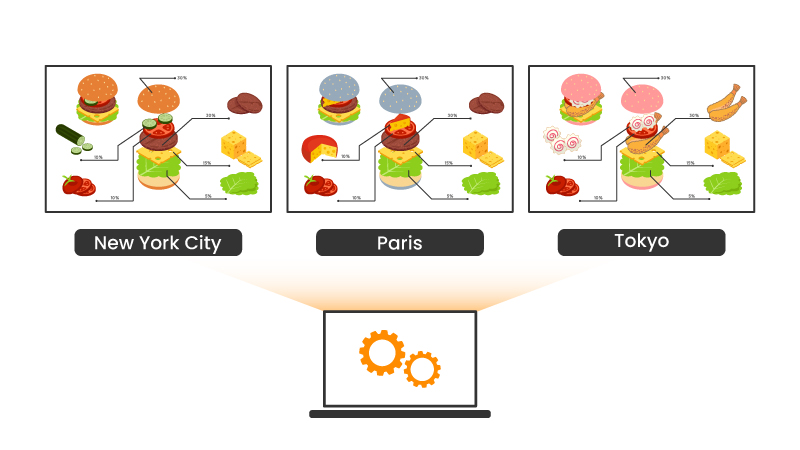
Customize content per store with multilingual menus, regional pricing, and location-specific items, while maintaining brand consistency across your entire chain.
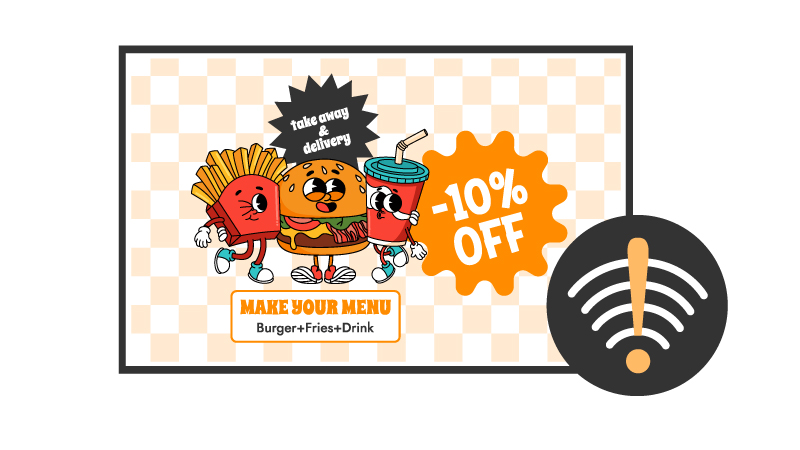
Internet issues shouldn’t disrupt your screens. Choose a CMS that caches content locally so your displays remain live and accurate even during temporary outages. This ensures operational continuity and minimizes customer disruption.
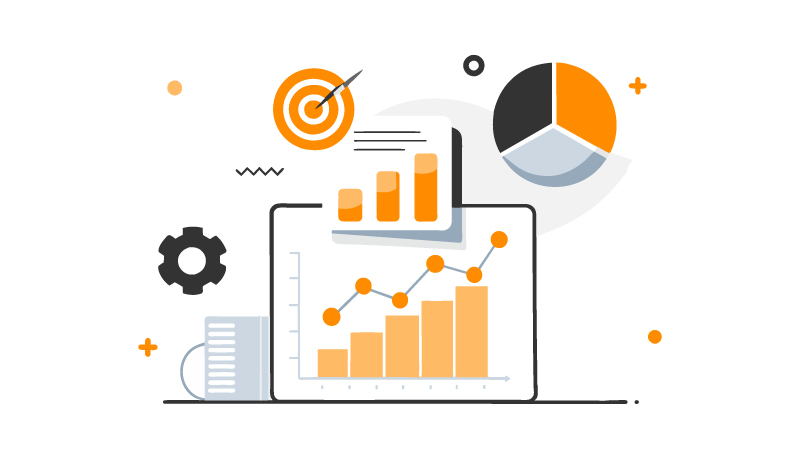
Use built-in tools to track metrics such as screen uptime, most viewed items, and engagement levels. This data is invaluable for refining future promotions and improving overall performance.
By carefully selecting hardware and CMS features tailored to your environment and needs, you can maximize the effectiveness of your digital menu board system—streamlining operations, improving customer experience, and driving sales growth.
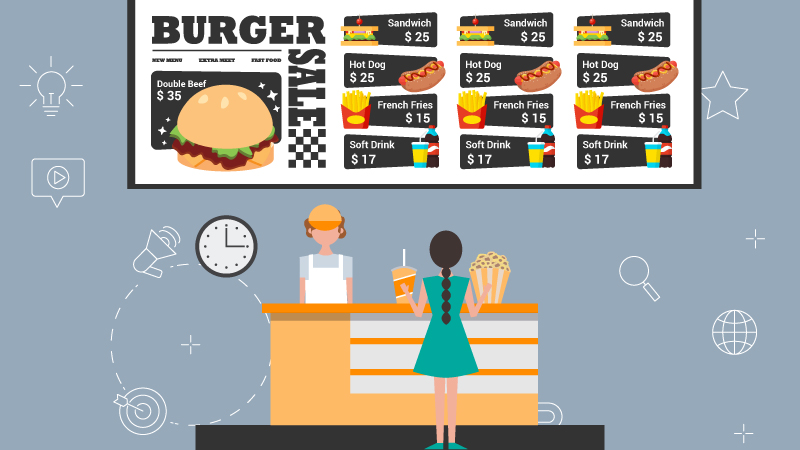
These are the most common form of digital menu boards, typically placed above the ordering counter in indoor environments. They are designed to improve menu visibility and streamline the customer decision-making process.
Hardware Needs: Indoor-rated screens with 350–500 nits brightness, Full HD resolution, and either wall-mounted or ceiling-suspended configurations.
CMS Requirements: Time-based scheduling, easy menu updates, and multiple-zone layouts to show menu items alongside promotions or loyalty campaigns.
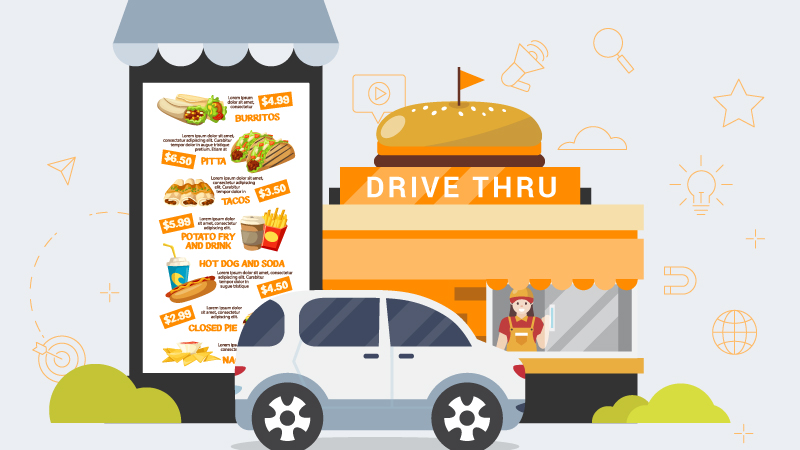
For QSRs with drive-thru service, outdoor displays are essential. They must be visible in daylight and resilient against weather conditions.
Hardware Needs: Weatherproof displays with anti-glare coatings, 1000+ nits brightness, and rugged casing.
CMS Requirements: Real-time content adjustments (e.g., sold-out notices), support for location-specific menus, and the ability to highlight limited-time offers during high traffic hours.
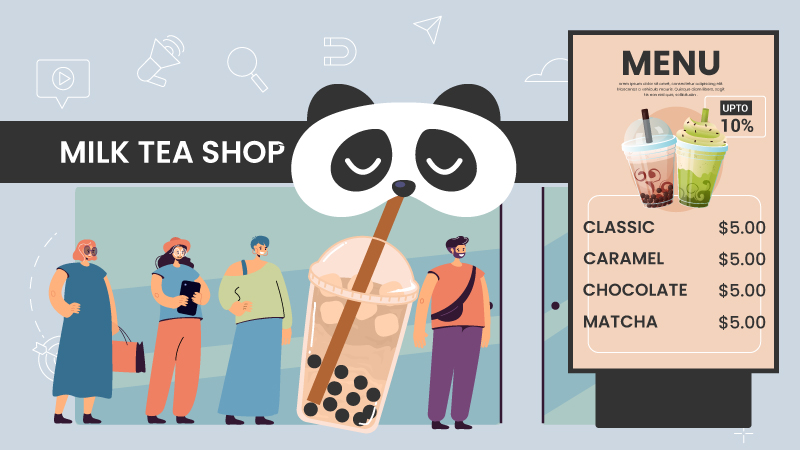
Used in entrance areas or near waiting zones, these screens attract attention with promotional content, seasonal campaigns, or storytelling visuals.
Hardware Needs: High-resolution indoor screens with vivid colors and clear motion rendering.
CMS Requirements: Multimedia content support (videos, animations), playlist scheduling, and campaign-based switching.
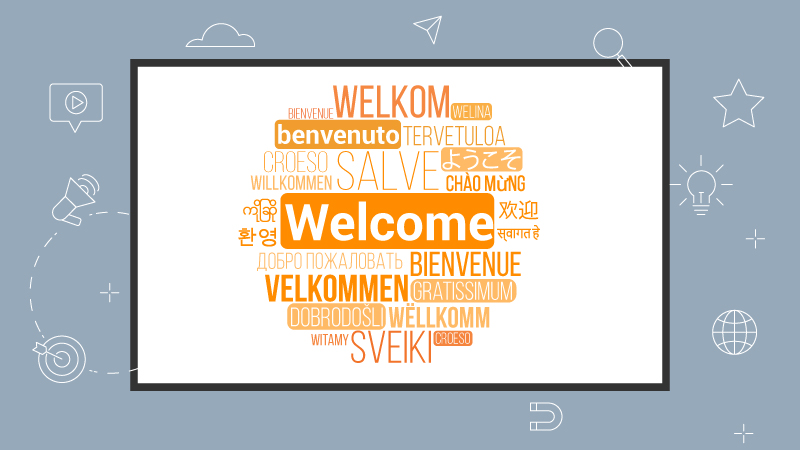
For restaurants in diverse neighborhoods or multi-branch setups, digital boards help maintain consistency while offering local flexibility.
Hardware Needs: Screens consistent in style and dimensions across locations.
CMS Requirements: Centralized dashboard with localization options—such as different languages, regional pricing, and targeted offers.
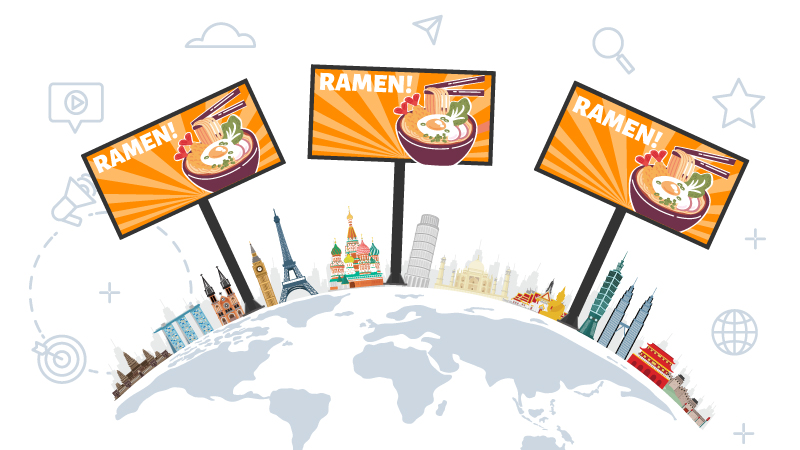
For restaurants in diverse neighborhoods or multi-branch setups, digital boards help maintain consistency while offering local flexibility.
Hardware Needs: Screens consistent in style and dimensions across locations.
CMS Requirements: Centralized dashboard with localization options—such as different languages, regional pricing, and targeted offers.
Content Creation: Photography, video production, and graphic design—either in-house or outsourced.
Most small QSRs recover their investment within 12 to 24 months, depending on the scale and frequency of content usage.
For small QSRs, a phased rollout reduces both risk and cost. Here’s how to implement digital menu boards step-by-step:
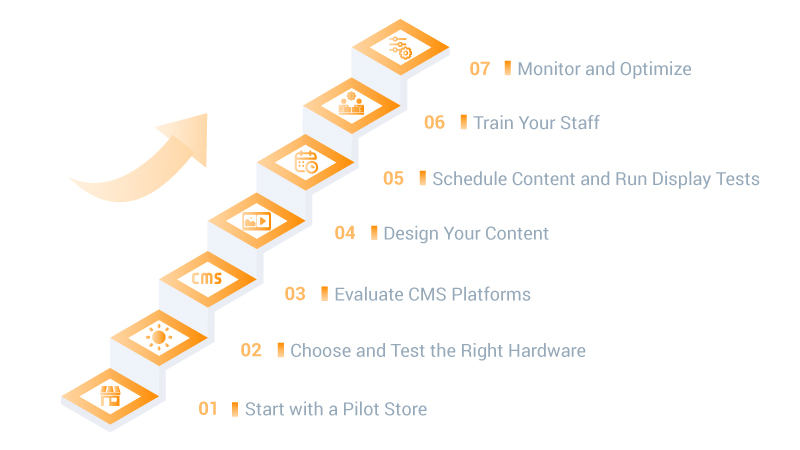
1. Start with a Pilot Store
Launch your first digital menu board setup in a single location. This will allow you to test display placement, brightness levels, and observe both staff and customer reactions.
2. Choose and Test the Right Hardware
Based on the store’s environment, select display models. Test screen brightness, visibility under real lighting conditions, and confirm mounting positions and bracket compatibility.
3. Evaluate CMS Platforms
Demo a few content management systems (CMS) or sign up for free trials. Focus on interface usability, scheduling flexibility, and vendor support.
4. Design Your Content
Prepare menu templates, promotional visuals, and brand elements (such as logos, fonts, and color schemes). Ensure content is visually consistent and easy to navigate.
5. Schedule Content and Run Display Tests
Set up content for dayparts (e.g., breakfast, lunch), promotional cycles, and special campaigns. Preview how everything looks on your actual screen: check font size, readability, and how lighting affects the display.
6. Train Your Staff
Assign 1–2 team members to learn CMS operations. They should be able to update content, manage the schedule, and troubleshoot basic display issues.
7. Monitor and Optimize
After going live, closely monitor screen performance, customer feedback, and sales data. Adjust content layouts, images, or promotions to improve effectiveness.
Maintaining digital menu boards isn’t just about keeping them turned on—it’s about keeping them effective and consistent over time. Here are key areas to manage:
– Regular Hardware Maintenance
Clean screens frequently to prevent dust buildup. Outdoor screens should be weather-resistant and protected against water and extreme sunlight.
– Stable Power and Network
Fluctuating electricity or unstable internet can cause content issues. Use surge protectors and ensure your network setup is reliable.
– Create a Content Update Workflow
Schedule regular reviews of menu prices, active promotions, and image quality. Outdated or blurry content hurts credibility.
– Enforce Visual Brand Consistency
Fonts, colors, layout style—everything should remain uniform. Avoid making inconsistent changes that damage your brand image.
– Prepare Backup Plans
Have a power backup (UPS), ensure your CMS supports offline playback, and preload fallback content in case of sudden outages.
No. Most CMS platforms are designed for small business owners and feature simple, intuitive interfaces. Basic training is usually enough. For Example, NowSignage CMS.
One screen in one store is plenty for testing and learning. Expand after you’re comfortable managing the basics.
Not always. Many systems cache content locally, so short-term internet outages won’t result in black screens.
High-quality commercial displays typically last 5–7 years. Outdoor screens may have shorter lifespans depending on weather exposure.
Absolutely. Even single-store operators benefit from easier updates, improved branding, better speed of service, and reduced printing costs.
Digital menu boards aren’t just a nice-to-have—they’re a powerful, cost-effective tool to modernize your QSR and streamline your daily operations.
Whether you’re running a single location or planning to scale, the right display and CMS combo can help you:
Want help choosing the right setup for your restaurant?
Our experts can walk you through hardware options, software features, and how to go live—fast.
Learn More About AG Neovo x NowSignage CMS Digital Menu Board Solution
Contact Us Now or Book a Free Demo to take the first step.